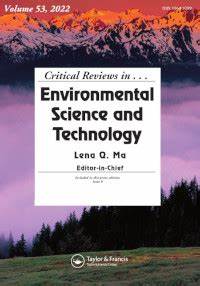医疗和保健废物的产生、储存、处理和处置:对职业卫生和公共卫生风险的系统范围审查
IF 11.4
1区 环境科学与生态学
Q1 ENVIRONMENTAL SCIENCES
Critical Reviews in Environmental Science and Technology
Pub Date : 2022-12-05
DOI:10.1080/10643389.2022.2150495
引用次数: 0
摘要
摘要安全储存、处理、处理和处置医疗废物的系统在21世纪得到了很好的发展。然而,在全球南方的许多地区(低收入和中等收入国家),缺乏这样的系统、资源和技术;医疗废物可能对数百万经常与这类材料接触的医护人员和废物处理人员的健康、安全和生命构成严重威胁。我们在这里提出了一个新的范围和维度,专门调查接触医疗废物的人的风险和危害,重点关注活动类型和既定的医疗实践。系统的证据范围审查(PRISMA Scr)用于批判性地分析、比较和总结数据。对危害、暴露和风险的普遍组合进行半定量评分和排名。我们的研究结果指出了对人类健康构成重大风险的三个核心主题:(1)废物处理人员对医疗废物的公开、不受控制的焚烧和初步焚烧,他们必须在陆地上(如垃圾场)焚烧或丢弃之间做出艰难的选择,因为在陆地上有感染病原体的风险;(2) 重复使用的医疗设备(如皮下注射针)的贸易规模很小,但不容忽视,由一批废物回收专家(拾荒者小组)激增;以及(3)全球北方和南方对医用锐器在生产、处理和储存方面的管理不善。建议采取立即行动和进一步研究相结合的方式,解决这些威胁数百万人健康和死亡率的问题并为其提供信息。图形摘要本文章由计算机程序翻译,如有差异,请以英文原文为准。
Medical and healthcare waste generation, storage, treatment and disposal: a systematic scoping review of risks to occupational and public health
Abstract Systems to safely store, handle, treat and dispose of medical (healthcare) waste are well developed in the 21st century. Yet, across many parts of the Global South (low-income and middle-income countries) such systems, resources and knowhow are lacking; to the extent that medical waste could pose a serious threat to the health, safety and lives of millions of healthcare workers and waste handlers who frequently interact with this category of materials. We present here a novel scope and dimension to investigating specifically the risks and hazards to people who come into contact with medical waste, focusing on activity types and established medical practice. A systematic scoping review of evidence (PRISMA-Scr) was used to critically analyze, compare and summarize data. Prevalent combinations of hazards, exposure and risk are semi-quantitatively scored and ranked. Our results signpost three core topics posing a major risk to human health: (1) Open, uncontrolled burning and rudimentary incineration of medical waste by waste handlers who have to make difficult choices between burning or discarding on land (e.g. in dumpsites) from where it risks pathogen infection; (2) A small but non-negligible trade in reused medical equipment (e.g. hypodermic needles), proliferated by a cohort of waste reclamation specialists (sub-group of waste pickers); and (3) The mismanagement of medical sharps at the point of generation, handling and storage in the Global North and South. A combination of immediate action and further research are recommended to address and inform on these topics which threaten the health and mortality of millions. GRAPHICAL ABSTRACT
求助全文
通过发布文献求助,成功后即可免费获取论文全文。
去求助
来源期刊
CiteScore
27.30
自引率
1.60%
发文量
64
审稿时长
2 months
期刊介绍:
Two of the most pressing global challenges of our era involve understanding and addressing the multitude of environmental problems we face. In order to tackle them effectively, it is essential to devise logical strategies and methods for their control. Critical Reviews in Environmental Science and Technology serves as a valuable international platform for the comprehensive assessment of current knowledge across a wide range of environmental science topics.
Environmental science is a field that encompasses the intricate and fluid interactions between various scientific disciplines. These include earth and agricultural sciences, chemistry, biology, medicine, and engineering. Furthermore, new disciplines such as environmental toxicology and risk assessment have emerged in response to the increasing complexity of environmental challenges.
The purpose of Critical Reviews in Environmental Science and Technology is to provide a space for critical analysis and evaluation of existing knowledge in environmental science. By doing so, it encourages the advancement of our understanding and the development of effective solutions. This journal plays a crucial role in fostering international cooperation and collaboration in addressing the pressing environmental issues of our time.

 求助内容:
求助内容: 应助结果提醒方式:
应助结果提醒方式:


